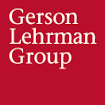Sales Operations
Accredited Consulting Service for Mr. Sweeney MBA BS Accredited Senior Consultant (ASC)
The Appleton Greene Accredited Consultant Service (ACS) for Sales Operations is provided by Mr. Sweeney and provides clients with four cost-effective and time-effective professional consultant solutions, enabling clients to engage professional support over a sustainable period of time, while being able to manage consultancy costs within a clearly defined monthly budget. All service contracts are for a fixed period of 12 months and are renewable annually by mutual agreement. Services can be upgraded at any time, subject to individual client requirements and consulting service availability. If you would like to place an order for the Appleton Greene Sales Operations service, please click on either the Bronze, Silver, Gold, or Platinum service boxes below in order to access the respective application forms. If you have any questions or would like further information about this service, please CLICK HERE. A detailed information guide for this service is provided below and you can access this guide by scrolling down and clicking on the tabs beneath the service order application forms.
Bronze Client Service
Monthly cost: USD $1,500.00
Time limit: 5 hours per month
Contract period: 12 months
SERVICE FEATURES
Bronze service includes:
01. Email support
02. Telephone support
03. Questions & answers
04. Professional advice
05. Communication management
To apply – CLICK HERE

Silver Client Service
Monthly cost: USD $3,000.00
Time limit: 10 hours per month
Contract period: 12 months
SERVICE FEATURES
Bronze service plus
01. Research analysis
02. Management analysis
03. Performance analysis
04. Business process analysis
05. Training analysis
To apply – CLICK HERE
Gold Client Service
Monthly cost: USD $4,500.00
Time limit: 15 hours per month
Contract period: 12 months
SERVICE FEATURES
Bronze/Silver service plus
01. Management interviews
02. Evaluation and assessment
03. Performance improvement
04. Business process improvement
05. Management training
To apply – CLICK HERE
Consultant profile
Mr Sweeney is an approved Senior Consultant at Appleton Greene and he has experience in management, marketing, and customer service. He has achieved a Masters of Business Administration, a Bachelor of Science and he is a Qualified Safety Sales Professional. He has industry experience within the following sectors: Manufacturing; Construction; Healthcare Consumer Goods and Utilities. He has had commercial experience within the following countries: United States of America; Canada; Spain; China and United Kingdom, or more specifically within the following cities: Miami; Boston MA; Los Angeles CA; Chicago IL and New York NY. His personal achievements include: led $750M industrial safety business; led $300M industrial supplies business; led $100M industrial equipment business; developed performance management process and developed sales operations process. His service skills incorporate: general management; marketing management; corporate training; sales management and learning provider.
To request further information about Mr Sweeney through Appleton Greene, please CLICK HERE

Executive summary
Sales Operations
Marketing encompasses many facets of the revenue generation function; Branding, awareness, customer loyalty, targeting markets, advertising and promotion, direct mail, pricing, proximity of product to customers. Within the marketing function in most mid-sized organizations is a direct sales department. Sales Operations is the science of aligning the correct and appropriate amount of sales resources to the current and anticipated needs of the business and available market. Direct sales, telesales, inside sales, customer service all touch the customer, and are responsible for maintaining profitable customer relationships, as well as identifying and acquiring new customers. Managing the various sales coverage models efficiently is a daunting task for many organizations. ROI is often difficult to determine due to overlapping customer coverage models, the point in customer life cycle with the organization, and external factors such as competition and market drivers like seasonality and other economic factors. Sales Operations consulting helps client companies rationalize and validate their current sales philosophy, quantify the investment vs the reward, and determine overall sales effectiveness. Customer coverage, seller span of responsibility, stratification of the sales efforts across coverage types, compensation, new customer acquisition and indirect sales are all evaluated to help clients understand if their current sales processes meet the needs of the current business and are appropriate to capture profitable new market share.
Service Methodology
A comprehensive evaluation of client’s current marketing and sales state would be the baseline for work in Sales Operations. Understanding how customers are serviced in terms of the various sales coverage models, how customers are acquired and developed through the life cycle, and how internal sales resources are compensated for growth and retention. Once the initial current state analysis is complete, then ROI would be calculated relative to profitability of the sales coverage model. Better said, what cost to the client organization exists to maintain and grow their business? Once ROI is established and agreed upon, recommendations are then made to adjust coverage for current state and propose investments in sales coverage for anticipated growth. Sales Effectiveness overall improves, sales management process is enhanced to consider these analyses for investment decisions, and client leadership is briefed on the proposed end gains to productivity and effectiveness.
Service Options
Companies can elect whether they just require Appleton Greene for advice and support with the Bronze Client Service, for research and performance analysis with the Silver Client Service, for facilitating departmental workshops with the Gold Client Service, or for complete process planning, development, implementation, management and review, with the Platinum Client Service. Ultimately, there is a service to suit every situation and every budget and clients can elect to either upgrade or downgrade from one service to another as and when required, providing complete flexibility in order to ensure that the right level of support is available over a sustainable period of time, enabling the organization to compensate for any prescriptive or emergent changes relating to: Customer Service; E-business; Finance; Globalization; Human Resources; Information Technology; Legal; Management; Marketing; or Production.
Service Mission
To evaluate, validate, and consolidate a client ‘s overall marketing and sales approach to the marketplace; increasing productivity and ROI, improving customer loyalty and retention, and allowing for new customer attainment. To educate the client in a sustainable sales and sales management process, thereby improving overall sales effectiveness of their sales investments.

Service objectives
The following list represents the Key Service Objectives (KSO) for the Appleton Greene Sales Operations service.
- Sales effectiveness
Comprehensive evaluation and validation of client sales force effectiveness. Coverage, stratification, compensation and overall ROI analysis. This analysis takes a high level view of client’s current state from outside direct sales, telesales, customer service, and any third party channels to market. Contribution of each coverage model evaluated for penetration of existing customer base, appropriate coverage model, new customer acquisition, lead generation and follow up. Recommendations made to client in terms of improving penetration, allocating sales resources, and increasing ROI (productivity and profitability) of sales investments. - Sales process
Sales process engineering is the engineering of better sales processes. It is thus the quest to design better ways of selling, making salespeople’s efforts more productive. It has been described as “the systematic application of scientific and mathematical principles to achieve the practical goals of a particular sales process.’ Evaluation of client’s process integrating marketing, sales and customer service. Concepts such as “Pipeline” or “Sales Funnel” are introduced to properly organize existing customers, run rate, opportunity closure rates, and new opportunity identification. Forecasting is also introduced as a mathematical process for salespeople vs the traditional guessing that occurs by salespeople. The stage is also set for a discussion of the Sales Management Process. - Sales Management
This section is devoted to analyzing the client’s sales management process for alignment with seller processes. To maximize results and productivity, the seller’s activities and tasks should align with overall corporate strategy and goals. It is the sales manager, utilizing a proven and practical management process that directs, coaches, counsels and guides sellers to invest in the most lucrative activities to obtain the sales goals. When sales management performs this arduous task correctly, corporate strategy is brought to life through seller activity and inputs, bringing entitlement to the organization. This process applies to direct sales, telesales, inside sales and customer service. It is also the responsibility of sales management to conduct upward communication to senior management about key opportunities or concerns with major customers, markets or segments for strategy adjustment where warranted. - Sales automation
Automation allows seller resources to manage their time and efforts transparently and immediately for all departments within the organization. Customer discussions and opportunities are captured via CRM (Customer Relationship Management) software or operating system. CRM tools are essential to manage the customer life cycle with client firms, allow visibility of plans to the entire customer service and sales management teams. CRM is the science behind the sales funnel and pipeline processes as it captures and organizes customer sales data and analytics into useable formats for all associated departments. This organization and immediacy of access to opportunities, improves urgency, increases sales and productivity, and provides a higher customer satisfaction rating (retention). - Sales compensation
Salespeople are motivated by two things; money and recognition. In this analysis, we look at client company compensation structure, and alignment to overall corporate strategy and objectives. From a compensation perspective, how much base pay or salary is allocated vs incentive or commission compensation? Does this current mix support organizational goals? Does it accurately and fairly compensate the sellers for their efforts and results? Rewards and recognition are also evaluated such as President’s Club, Annual and quarterly awards, incentive trips and other incentives. How effective are these incentives at motivating the correct seller and sales manager behaviors toward corporate strategy entitlement?

Achievements
Vertilux LTD
Increased sales by 50% and profits by 30% simultaneously by identifying the most lucrative US opportunities and penetrating relevant and immediate opportunities. Also drove a sense of urgency in areas of customer service, accurate delivery and inventory. Having a defined marketing strategy combined with a principled sales management and operations focus allowed Vertilux to attain never before seen results in the US/Canadian marketplace.
Grainger, Inc.
Successfully developed, led and executed refined and targeted sales process in safety supplies arena. By defining core objectives and measuring against performance to those objectives, growth rates in the safety category were 3X growth of the general supplies business. Aggressively utilized supplier support resources to align with the strategy to compliment resources within the company to drive results exceeding goals. Developed sales management and sales operations strategy and protocol to insure consistency of service and continued, profitable growth. Vast experience in the industrial supplies and equipment distribution model over 22 years with the company.
Gehrson Lehman Group
Provided subject matter expert consulting on Industrial supplies, MRO, national and region al players within the industry to major consulting firms, hedge funds, and capital groups worldwide. Many consults on threat of web based retailers on players within the segment and projected trends and long term competitive pressures. Also evaluated an acquisition of a regional player in the industrial supplies sector and was offered a seat on the board of the investment firm. Consults for GLG span 2012 to present and still growing in terms of engagement.
Bain Consulting
”Was most helpful as SME in both the industrial supplies/MRO arena, as well as the textiles and consumer goods areas. Demonstrated expertise in customer behavior, procurement process, and consolidation of suppliers within the sectors. Is a valued and trustworthy source for impactful information and is responsive and articulate. Able to summarize vast data into digestible, useful information.”
Vertisol International
Opened the door for our goods to the US and Canadian markets, while increasing profitability and sustained volume growth. Helped improve quality and was a source of information for new product ideas and launches in 2014 and 2015. Successfully educated our plant on how to capitalize on the needs of the North American market, quality requirements and delivery urgency and accuracy. Strong understanding of entire US marketplace, key segments and most lucrative opportunities.
More detailed achievements, references and testimonials are confidentially available to clients upon request.

Industries
This service is primarily available to the following industry sectors:
Manufacturing
In the most recent data, manufacturers contributed $2.09 trillion to the economy. This figure has steadily risen since 2009 when manufacturers contributed $1.73 trillion. The sector accounts for 12.0 percent of GDP.1 For every $1.00 spent in manufacturing, another $1.37 is added to the economy, the highest multiplier effect of any economic sector. Manufacturing supports an estimated 17.6 million jobs in the United States—about one in six private-sector jobs. More than 12 million Americans (or 9 percent of the workforce) are employed directly in manufacturing. Manufacturers in the United States are the most productive in the world, far surpassing the worker productivity of any other major manufacturing economy, leading to higher wages and living standards. Manufacturers in the United States perform more than three-quarters of all private-sector R&D in the nation, driving more innovation than any other sector. Taken alone, manufacturing in the United States would be the ninth-largest economy in the world. Consistent pressure for manufacturers to increase productivity, decrease fixed and variable expenses, and compete in a global economy will increase the need for outsourced consulting and learning management functions. Small to medium sized manufacturers don’t have the full time resources to effectively drive LEAN and Continuous Improvement initiatives through an organization in a sustainable fashion. Light manufacturing, Technology, Medical/Surgical products, Aviation and Defense will drive the economy in this sector, with automobiles and other heavy manufacturing declining to continued global competition and quality.
Healthcare
The healthcare industry (also called the medical industry or health economy) is an aggregation and integration of sectors within the economic system that provides goods and services to treat patients with curative, preventive, rehabilitative, and palliative care. Healthcare in the United States is provided by many distinct organizations. Health care facilities are largely owned and operated by private sector businesses. 58% of US community hospitals are non-profit, 21% are government owned, and 21% are for-profit. According to the World Health Organization (WHO), the United States spent more on health care per capita ($8,608), and more on health care as percentage of its GDP (17.2%), than any other nation in 2014. At $2.9 trillion, the state of the U.S. healthcare industry is strong and growing. Average life expectancy increases annually each year, and as the population increases each year, the sheer economics of healthcare are formidable and should grow for decades to come. Changes in legislation allowing for more Americans to obtain quality healthcare also have driven consumption in this sector. Both the med/surg and facilities sectors within healthcare will continue to grow due to higher variable consumption in med/surg and need for more bricks and mortar to perform and house acute and subacute procedures, as well as long term care facilities.
Construction
The construction sector comprises establishments primarily engaged in the construction of buildings or engineering projects (e.g., highways and utility systems). Establishments primarily engaged in the preparation of sites for new construction and establishments primarily engaged in subdividing land for sale as building sites also are included in this sector. The US construction industry is set to pick up over the next five years. Investments to modernize the country’s aging infrastructure and renewable energy sector, alongside the growing population which will generate demand for residential buildings, will be part of a number drivers of this growth. Though cyclical, and dependent on the health of the overall economy and GDP, construction represents a growth sector for the foreseeable future. Industrial equipment, supplies, building materials, architects and designers will be in higher demand. As well, the second tier, small and medium subcontractors, designers, and service providers will be in a growth cycle. The construction sector generally lacks the discipline of cost containment and productivity measures as they struggle to manage deadlines. Consultants can help put processes in place during the upswing that will insulate construction firms during the downswings.
Consumer Goods
A category of stocks and companies that relate to items purchased by individuals rather than by manufacturers and industries. This sector includes companies involved with food production, packaged goods, clothing, beverages, automobiles and electronics. Performance in the consumer goods sector depends heavily on consumer behavior. When the economy grows the sector will see an increased demand for higher-end products. When the economy shrinks there is an increased demand for value products. While some product types, such as food, are necessary, others, such as automobiles, are considered luxury items. This sector is heavily dependent on population growth, environmental responsibility, political correctness and effective marketing. Mass marketing efforts need to capture these elements to appeal to the consumer into the future. Internet sales through web merchants will put pressure on traditional bricks and mortar in the non-perishable CPG area, while increased investment in Supercenter supermarkets will accommodate the perishable sector. Small and medium sized specialty manufacturers will either occupy a profitable niche or face elimination by the mass merchants.
Utilities
The utilities sector contains companies such as electric, gas and water firms and integrated providers. Because utilities require significant infrastructure, these firms often carry large amounts of debt. With a high debt load, utilities companies become sensitive to changes in the interest rate. As interest rates rise or drop, the debt payments will increase or decrease. The utilities sector performs best when interest rates are falling or remain low. Utilities construction will top all other subcategories in the construction segment through 2019. Utilities are dependent on population growth for consumption, but must invest heavily in conservation measures to accommodate the expanding demand. Investments in wind and solar will continue to replace traditional coal and oil, with nuclear remaining flat or lower due to decommissioning. Worker safety and uninterrupted service are the paramount initiatives for utilities, both representing huge opportunity for consulting on process improvement and behavior change.
Locations
This service is primarily available within the following locations:
Miami FL
The Miami metropolitan area anchors a region commonly referred to by local inhabitants as South Florida; it is the metropolitan area comprising Miami, Florida, and nearby communities. With 5,929,819 inhabitants as of 2014, the Miami metropolitan area is the most populous in Florida and second largest in the Southeastern United States behind Greater Washington DC, and the eighth-most populous in the United States. Because the population of South Florida is largely confined to a strip of land between the Atlantic Ocean and the Everglades, the Miami urbanized area (that is, the area of contiguous urban development) is about 110 miles (180 km) long (north to south), but never more than 20 miles (32 km) wide, and in some areas only 5 miles (8.0 km) wide (east to west). The MSA is longer than any other urbanized area in the United States except for the New York metropolitan area. It was the eighth most densely populated urbanized area in the United States in the 2010 census. Miami is a major transportation hub to the world, is a major population center, and represents the catalyst for business growth in the USA. It is growing due to investments in infrastructure, construction and population. Key industries include hospitality, tourism, healthcare and import/export. The strong US dollar relative to other world currencies makes this an attractive area of focus for business management, strategy, and productivity improvement. My consulting practice is located in the Miami MSA, and I have worked and resided there for 4 years.
New York NY
The New York metropolitan area includes the most populous city in the United States (New York City); counties comprising Long Island and the Mid- and Lower Hudson Valley in the state of New York; the five largest cities in New Jersey (Newark, Jersey City, Paterson, Elizabeth, and Edison) and their vicinities; six of the seven largest cities in Connecticut (Bridgeport, New Haven, Stamford, Waterbury, Norwalk, and Danbury) and their vicinities; and five counties in northeastern Pennsylvania. As per the 2013 United States Census Bureau estimates, the New York metropolitan area remains by a significant margin the most populous in the United States, as defined by both the Metropolitan Statistical Area (20.1 million residents) and the Combined Statistical Area (23.6 million residents); it is also one of the most populous urban agglomerations in the world, and the single largest in North America. The New York metropolitan area continues to be, by far, the premier gateway for legal immigration to the United States. The MSA covers 6,720 sq mi (17,405 km2), while the CSA area is 13,318 sq mi (34,493 km2), encompassing an ethnically and geographically diverse region. The New York metropolitan area’s population is larger than that of the state of New York. As a center of many industries, including finance, international trade, new and traditional media, real estate, education, fashion and entertainment, tourism, biotechnology, and manufacturing, the New York City metropolitan region is one of the most important economic regions in the world; in 2013, the MSA produced a gross metropolitan product (GMP) of nearly US$1.39 trillion, while in 2012, the CSA had a GMP of over US$1.55 trillion, both ranking first nationally by a wide margin and behind the GDP of only twelve nations and eleven nations, respectively. In 2012, the New York metropolitan area was also home to seven of the 25 wealthiest counties in the United States by median household income, according to the American Community Survey. According to Forbes, in 2014, the New York City metropolitan area was home to eight of the top ten zip codes in the United States by median housing price, with six in Manhattan alone. The New York metropolitan region’s higher education network comprises hundreds of colleges and universities, including Princeton University, Columbia University, Yale University, New York University, and Rockefeller University, which have been ranked among the top 35 in the world. I resided and worked in the NYC MSA for 15 years and possess intimate familiarity with the marketplace, demographics, education, government, transportation and tourism.
Chicago IL
The Chicago metropolitan area, or Chicagoland, is the metropolitan area associated with the city of Chicago, Illinois, and its suburbs. It is the area that is closely linked to the city through geographic, social, economic, and cultural ties. There are several definitions of the area, including the area defined by the Office of Management and Budget (OMB) as the Chicago-Joliet-Naperville, IL-IN-WI Metropolitan Statistical Area (MSA) and the area under the jurisdiction of the Chicago Metropolitan Agency for Planning (CMAP) (a metropolitan planning organization). The population of the Chicago CSA (Combined Statistical Area) is over 9.9 million people. Chicago is a major business center, transportation hub, educational and cultural center, and home to 33 of the Fortune 500 companies. One such company is Grainger, Inc., where I worked for over 20 years and possess considerable understanding of the geography.
Los Angeles CA
The Los Angeles metropolitan area, also known as Metropolitan Los Angeles or the Southland, is the 18th largest metropolitan area in the world and the second-largest metropolitan area in the United States. It is entirely located in the southern portion of the U.S. State of California. The metropolitan area is defined by the Office of Management and Budget as the Los Angeles-Long Beach-Anaheim, CA Metropolitan Statistical Area (MSA), consisting of Los Angeles and Orange counties, a metropolitan statistical area used for statistical purposes by the United States Census Bureau and other agencies. Its land area is 4,850 sq. mi (12,562 km²). Los Angeles and Orange counties are the first and third most populous counties in California respectively, and Los Angeles, with 9,819,000 people in 2010, is the most populous county in the United States. The combined Los Angeles metropolitan area is home to 18.2 million people, making it the most populous metropolitan area in the western United States and the largest in area in the United States. The metro area has at its core the Los Angeles-Long Beach-Anaheim corridor, an urbanized area defined by the Census Bureau with a population 12,150,996 as of the 2010 Census. The Census Bureau also defines a wider region based on commuting patterns, the Los Angeles-Long Beach, CA Combined Statistical Area (CSA), more commonly known as the Greater Los Angeles Area, with an estimated population of 18,238,998. This includes the three additional counties of Ventura, Riverside, and San Bernardino. The total land area of the combined statistical area is 33,955 sq. mi (87,945 km²). Known worldwide as the home of “Hollywood: Entertainment Capital of the World”, Los Angeles has much to offer aside from blockbuster movies. The Port of Long Beach welcomes 70% of the USA bound cargo ships from China, Korea and Japan and is vital to trade with these countries. LA is a major educational and cultural center, with tourism being a notable economic influence. Tijuana, Mexico is less than 100 miles to the south, so the workforce demographics of the area are greatly influenced by Mexican culture.
Boston MA
Greater Boston is the area of the Commonwealth of Massachusetts surrounding the city of Boston, consisting most of the eastern third of Massachusetts, excluding the South Coast, Cape Cod & The Islands. The area can be characterized as the metropolitan statistical area (MSA) or the combined statistical area (CSA), the latter which includes the metro areas of Manchester, New Hampshire; Providence, Rhode Island and Worcester, Massachusetts. By contrast, Metro Boston is usually reserved to signify the “inner core” surrounding the City of Boston, while “Greater Boston” usually at least overlaps the North and South Shores, as well as MetroWest and the Merrimack Valley. Greater Boston is tenth in population among U.S. metropolitan statistical areas in the United States, home to 4,732,161 people as of the 2014 estimate by the U.S. Census Bureau and is ranked sixth among CSAs, having 8,099,575. Greater Boston has many sites and people significant to American history and culture, particularly the American Revolution, civil rights, literature, and politics, and is one of the nation’s centers of education, finance, industry, and tourism, with the ninth-largest GDP in the country and fifteenth-largest in the world. Boston is home to 15 of the Fortune 500 and one of the oldest settled areas in the US, with the first area incorporated in 1620.
Clients
This service’s current clients or employers include:
Grainger Inc
W. W. Grainger, Inc. is a Fortune 500 industrial supply company founded in 1927 in Chicago. Grainger’s catalog includes such offerings as motors, lighting, material handling, fasteners, plumbing, tools, and safety supplies.
W.W. Grainger Inc – Click Here
Vertisol International
Vertisol was founded in 1982, when its first fabrics were manufactured at the plant in Lliçà de Munt. It currently has two factories in Spain, one in Granollers (Barcelona) and another in Morana (Pontevedra), which allow it to efficiently develop each one of the different production processes, research new solutions and guarantee high production capacity. Vertisol’s facilities in Barcelona are, besides being the company headquarters, the site where the fabrics are manufactured by coating and impregnation processes. These weaving and finishing facilities specialise in the manufacture of polyester and polyester/cotton fabrics, as well as recycled yarns. Vertisol’s modern facilities in Pontevedra make it one of the few plants in the world capable of performing the completing production process of vinyl coating fabrics, from the manufacture of the raw material through to the finished product, via highly sophisticated processes such as spinning extrusion. Both plants are equipped with cutting-edge machinery, but their greatest asset is a team comprised mostly of highly-qualified experienced technicians.
Vertisol International – Click Here
Vertilux LTD
Vertilux is recognized as one of the world’s foremost manufacturer and distributor of fabrics, aluminium, wood slats, materials and components for the window covering industry. The company began over twenty years ago in Florida, and its founders, already had valuable skills and many years of experience in the manufacturing and sales of vertical blinds. Today, Vertilux has a partnership network of distributors in the United States, Spain, Mexico, Puerto Rico, El Salvador, and Australia, making the Vertilux brand recognized in more than 75 countries worldwide.
Gerson Lehrman Group
GLG is driven by the curiosity of approximately 1,000 employees around the world who are transforming the way the top professionals share expertise and learn. Soon after its founding in 1998 GLG began connecting top professionals across fields and around the country. Over time, we became a membership of leading experts providing business decision-makers with insights to create better, more informed outcomes. Today, we are the world’s largest membership network for one-on-one professional learning, comprising more than 425,000 thought leaders and practitioners, including business leaders, scientists, academics, former public sector leaders and the foremost subject matter specialists. We serve users at more than 1,400 client companies in 40 countries. These clients include Fortune 500 companies in nearly every sector and the leading professional services firms and financial institutions. GLG’s industry-leading compliance framework allows clients to learn in a structured, auditable, and transparent way, consistent with their own internal compliance obligations and the highest professional ethical standards. Our compliance standards are a major competitive differentiator and key component of the company’s culture. GLG is headquartered in New York with 22 offices globally and 1,000 employees.
Gerson Lehrman Group – Click Here
Bain and Company Consulting
Bain and Company is the management consulting firm the world’s business leaders come to when they want enduring results. Together, we find value across boundaries, develop insights to act on, and energize teams to sustain success. We’re passionate about always doing the right thing for our clients, our people and our communities, even if it isn’t easy.
Bain and Company Consulting – Click Here

Benefits
Management
- Business growth
- Expense management
- Productivity improvement
- Process improvement
- Customer retention
- Customer loyalty
- Business sustainability
- Operational standardization
- Corporate training
- Employee development
Marketing
- Sales growth
- Web advertising
- Trade advertising
- Direct marketing
- Mass advertising
- Sales process
- Sales effectiveness
- Sales operations
- Profitability
- Customer loyalty
Customer service
- Customer loyalty
- Customer retention
- Call centers
- Telesales operations
- Inside sales
- Service delivery
- Warranty operations
- Service accuracy
- Customer experience
- Order rate
Bronze Service
Monthly cost: USD $1,500.00
Time limit: 5 hours per month
Contract period: 12 months
Bronze service includes:
01. Email support
02. Telephone support
03. Questions & answers
04. Professional advice
05. Communication management
SERVICE DESCRIPTION
The Bronze Client Service (BCS) for Sales Operations provides clients with an entry level option and enables client contacts to become personally acquainted with Mr. Sweeney over a sustainable period of time. We suggest that clients allocate up to a maximum of 5 Key Employees for this service. Your Key Employees can then contact the consultant via email, whenever they feel that they need specific advice or support in relation to the consultant’s specialist subject. The consultant will also be proactive about opening and maintaining communications with your Key Employees. Your Key Employees can list and number any questions that they would like to ask and they will then receive specific answers to each and every query that they may have. Your Key Employees can then retain these communications on file for future reference. General support inquiries will usually receive replies within 48 hours, but please allow a period of up to 10 business days during busy periods. The Bronze Client Service (BCS) enables your Key Employees to get to know their designated Appleton Greene consultant and to benefit from the consultant’s specialist skills, knowledge and experience.
Silver Service
Monthly cost: USD $3,000.00
Time limit: 10 hours per month
Contract period: 12 months
Bronze service plus
01. Research analysis
02. Management analysis
03. Performance analysis
04. Business process analysis
05. Training analysis
SERVICE DESCRIPTION
The Silver Client Service (SCS) for Sales Operations provides more time for research and development. If you require Mr. Sweeney to undertake research on your behalf, or on behalf of your Key Employees, then this would understandably require more time and the Silver Client Service (SCS) accommodates this. For example, you may want your consultant to undertake some research into your management, performance, business, or training processes, with a view towards providing an independent analysis and recommendations for improvement. If any research and development, or business analysis is required, then the Silver Client Service (SCS) is for you.
Gold Service
Monthly cost: USD $4,500.00
Time limit: 15 hours per month
Contract period: 12 months
Bronze/Silver service plus
01. Management interviews
02. Evaluation and assessment
03. Performance improvement
04. Business process improvement
05. Management training
SERVICE DESCRIPTION
The Gold Client Service (GCS) for Sales Operations is intended for more detailed evaluation and assessment, that may require your Key Employees to have monthly meetings or interviews with Mr. Sweeney. These meetings and interviews can be conducted over the telephone, Skype, or by video conference if required. The consultant can also attend your business premises, an Appleton Greene office, or another mutually beneficial location, but please note that clients are responsible for the costs of any disbursements separately, including travel and accommodation. This service enables you to integrate the specific skills, knowledge and experience of your designated consultant into your Key Employee management team. The Gold Client Service (GCS) can also incorporate training workshops, business presentations and external meetings with customers, suppliers, associations, or any other business-related stakeholders.
Platinum Service
Monthly cost: USD $6,000.00
Time limit: 20 hours per month
Contract period: 12 months
Bronze/Silver/Gold service plus
01. Project planning
02. Project development
03. Project implementation
04. Project management
05. Project review
SERVICE DESCRIPTION
The Platinum Client Service (PCS) for Sales Operations is our flagship service and will be required if you need Mr. Sweeney to facilitate the planning, development, implementation, management, or review of a particular project relating to his specialist subject, which would obviously require more time and dedication. This service enables you to reserve up to 12.5% of the consultant’s working month and provides a more hands-on service as and when required. If you need more time than this, then this can always be arranged, subject of course to the consultant’s ongoing availability. The benefit of having an external consultant involved in projects is they provide an independent perspective and are not influenced by internal politics, day-to-day responsibilities, or personal career interest. They provide objectivity, specific knowledge, skills and experience and will be entirely focused upon the tasks at hand. The Platinum Client Service (PCS) will provide your organization with a valuable resource as and when you need it.








































